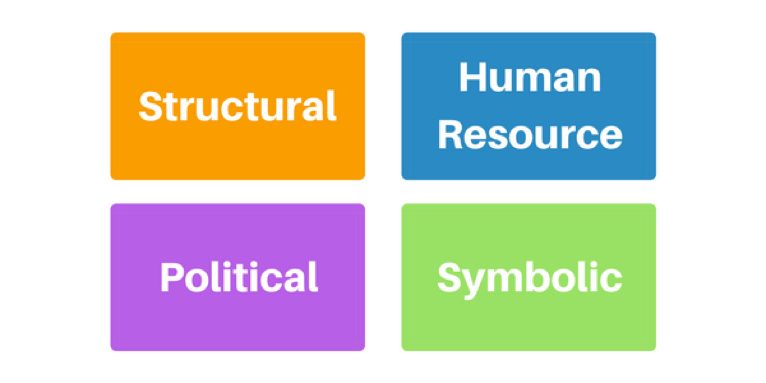How to Reveal Your Unique Leadership Style & Lead with Confidence

Being a leader in an office doesn’t just mean delegating tasks or being a figurehead—it means having the desire to make an impact on the direction of the organization and the spirit of those around you. Erica Kelley, an Executive Assistant to the CEO and Administrative Support Manager and 2017 Ninja All-Star, is the perfect example of leadership that goes against the stereotype. Erica strolls the halls of her team’s office on a daily basis, solving problems and engaging in conversations with co-workers from across the organization, showing us the potential facets of a modern leader.
“Leadership encompasses so much more than just getting people to execute tasks. It includes inspiring others in confidence and purpose, building authenticity and trust among colleagues and teams, being courageous enough to advocate for a vision of something that others may not necessarily understand or support (at that moment), and yes, eventually being able to deliver on (with the right people around you) whatever it is that you have set out to do.” – Lynn W., Executive Administrator
In fact, Duke University found that leadership development comes in as the second-largest challenge facing organizations—but don’t confuse that with management.
When we talk about leadership, we mean the way you interact in teams, how you motivate your co-workers, and the influence you exert on those around you. It’s these interactions that define your leadership style, not your ability to delegate tasks.
Learning your style forces you to acknowledge your strengths and weaknesses, ultimately making you a better teammate AND a better leader.
What Is a Leadership Style?
Bolman and Deal articulated four styles of leadership in their 1984 book Reframing Organizations, which is still used today as a classic perspective on leadership development. Each style is characterized by different perspectives and approaches to issues like motivating teams, solving problems, and managing change.

Everyone—even you—embodies each leadership style to some extent, but most people are stronger in one area. So even though Ninjas are known for executing in the shadows and making plans that enable company leaders to succeed, you’re still leaders in your own right.
How to Find Your Leadership Style
To find your strongest style of leadership, check out Leadership Orientations and run through the worksheet about your personal qualities. This exercise shows a set of statements, then asks how well each statement describes you. Once you’ve tallied up your answers, they’ll shed light on your dominant leadership style, which could be one of the following.
Structural
Structural leaders prefer, well, structure. These leaders excel at tasks that require rationality, facts, and data.
You may be a structural leader if people describe you as a technical expert. You’re also probably known for your attention to detail and you excel at clear, logical thinking.
Structural leaders may need to work on focusing on the big picture though. For example, if you’re an operations coordinator, getting bogged down in details could be a routine challenge. In this case, structural leaders need to keep the full scope of a project at the forefront of their mind—along with the minutiae.
For their keen attention to detail, structural leaders excel in roles like change management, where they can be in charge of the many pieces that make up a larger puzzle.
Human Resources
If you’re a “people person,” you’re likely strong in the Human Resource style of leadership. These leaders always emphasize the importance of people. This might be your style if you’re known as a good listener or if you excel at developing teams as well as individuals.
HR leaders do well in roles with a big people component, but they tend to be ruled by their emotional side. Ninjas with this leadership style may need to detach feelings, attitudes, and beliefs from professional interactions.
Due to the nature of the admin role, many Ninjas are exceptionally strong in the HR style. The open communication and care provided by those within the realm of HR leadership make them particularly suited to administrative or EA/PA roles in organizations of all sizes.
Political
Political leaders worry most about the conservation of resources and the balance of power.
Your strength may lie in the political style if you’re described as a skilled negotiator with proven ability to build alliances. See where this style gets its name? Leaders who resonate with this see conflict as a natural, and necessary part of doing business.
Though thoughtful in many rights, political leaders may need to think about the human cost to their decisions. However, the ability to strike a deal means political leaders do well in organizations with scarce resources or varying stakeholders, like government departments or heavily regulated industries.
Symbolic
Finally, people who are strong in the symbolic style of leadership are often those masterminding the big picture or vision behind projects.
You might be a symbolic leader if you have a big imagination, tons of creativity, and are known for being charismatic and inspiring.
Inspiration is great, but blue-sky thinking means symbolic leaders must remember to bring their heads down from the clouds on occasion. They’ll need to zoom in on the details to really understand what’s going on in their organization.
For example, working in a creative field might mean you get carried away with grand ideas. Keeping a foot on the ground will make sure you don’t get swept up by the current and lose collaborators along the way.
Put Your Leadership Style to Work
Leadership is half knowledge and half execution, so knowing your leadership style is only half of the equation.
Execution means matching your style to the environment and being cognizant of your strengths and weaknesses. Leadership also encompasses caring about your team and seeking to develop their full potential.
Consider employing some of the following strategies to get the most from your leadership style.
- Seek to develop the style in which you are the weakest. Look for projects that cater to your strongest leadership style, but don’t shy away from those that challenge one of your weaker areas.
- Be flexible. Sure, you might identify predominantly as a structural leader, but that doesn’t mean you can’t flex your political muscle when needed. Don’t limit yourself to your strongest style.
- Make sure you listen to different perspectives. Make a point of seeing a problem from someone else’s point of view. Be sure to ask lots of questions and really comprehend the answers.
- Build diverse teams. When forming a group, ensure you have representation from each leadership style. Balanced representation is the best way for all styles to work in harmony.
“If you’re perfect, and you’re done improving (I don’t think this exists!) then I guess it would be fine to work with a team who naturally and perfectly is suited to your style. However, since most of us have plenty of areas for improvement, I would advocate you seek a team that you have some natural tendencies in common with. They will help you grow and vice versa.” – Willa G., Executive Assistant
You Can Be a Leader, With or Without a Title
You don’t need to have a fancy title to qualify as a leader. Any person can demonstrate leadership, but not all leaders are created equal. It’s how a leader manages tasks and teams that determines effectiveness.
Knowing your predominant leadership style can also help you grow by making you more in tune with the way you interact with supervisors, direct reports, and colleagues. Likewise, pinpointing your leadership style now can enable you to develop in new areas—which will benefit you in the future.
Ninjas, which of these four is your leadership style? How has it influenced your career or influenced how you work?
Great article! Striving to be the best Office Ninja for continued success!
Great article! I am way towards the Human Resources, but the Structural does come handy.
Awesome. Flexibility and listening are very important parts of leadership. You need that ability to adjust and work with what’s going on to be successful.
Great article! Not surprised I’m HR & Political mostly and weaker in the other two areas. Colleagues have always said I’m a “people person” who knows how to connect people. Looking forward to expanding my two weaker areas.
So glad you could get something out of it!
Very interesting! It turns out I’m equally HR and political, with structural being a close second. Symbolic was way down there, which just reaffirms my suspicions I need to think out of the box a little more. Thank you for a great article, this was really helpful in discovering where I can work to build a stronger foundation and where I can improve :)
Thank you for striving to be the best Ninja you can be, Selena! We hope you find success in building your leadership skills.